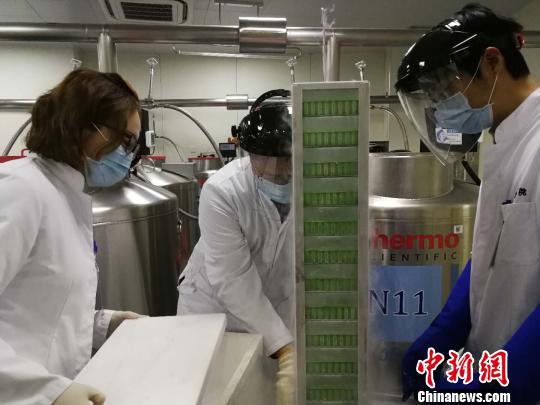
The scientists work in the laboratory. (Photo: China News Service/Xu Jing)
Chinese researchers have regenerated human lung tissue in a patient using that patient's own stem cells, the first time that has been achieved worldwide, said Zuo Wei, lead researcher of the team from the School of Medicine of Tongji University in Shanghai.
After obtaining dozens of stem cells by brushing a patient's lungs, researchers let the cells multiply into the tens of millions in a lab, then transplanted them into the damaged part of the patient's lungs.
After three to six months, the stem cells formed new lung structures, repairing the damaged tissues, Zuo said.
"The research signifies that the revival of human organs has stepped out of the lab and into clinical application," said Zhang Jun, Party chief of the school.
A paper about their study was published on the Protein& Cell website, a Beijing-based international journal, on Jan 17.
Once lung tissues are damaged and develop fibrosis - excessive growth of connective tissue - the disease often continues and cannot be reversed. Traditional medicines only slow down the process of fibrosis, doctors said.
However, stem cells have the ability to regenerate and repair tissue, Zuo said.
In lab experiments, the lungs of mice with fibrosis in their organs became "very healthy" three weeks later, he said.
More than 80 patients have been involved in the clinical experiments since April 2016, and all of them showed progress in indicators such as lung capacity and walking distance, Zuo said.
"The repair and substitution for the lesion tissues in lungs are clearly visible through CT scans and they reported less coughing, sputum and shortness of breath," Zuo said.
Not all damaged tissue can be replaced by transplanted stem cells, he said, but improvement is visible for everyone to see.
Such transplants are not suitable for all kinds of lung diseases.
"It will mainly work for lung diseases caused by damaged tissues, such as bronchiectasis, chronic obstructive pulmonary disease and interstitial lung disease. Lung cancer is not included," Zuo said.
Dai Xiaotian, a doctor from the respiration department of the First Hospital affiliated to the Army Medical University in Chongqing, who was responsible for the clinical experiments in the research, said more patients will be recruited this year and the patients will all undergo longterm observation.
Research this year will also focus on whether such transplants will work for patients with other diseases, such as of the kidneys and uterus, Zuo said.


















































